In the Significance of Soil, we learned that, if soil loss continues at its current rate, then all of the world’s topsoil could be gone in 60 years. Two questions that naturally arise are, (1) how are we losing soil at such an alarming rate? and (2) where is this soil going?
One question that may not come so naturally, especially for those in the industry, is, can our booming cannabis industry be partially to blame?
In this post, we will investigate some recent reports stating that cannabis farming is hurting the environment. We will also dig deeper into what causes soil loss, and look at what can be done to prevent it.
The Science of Soil Loss
Soil Loss via Erosion
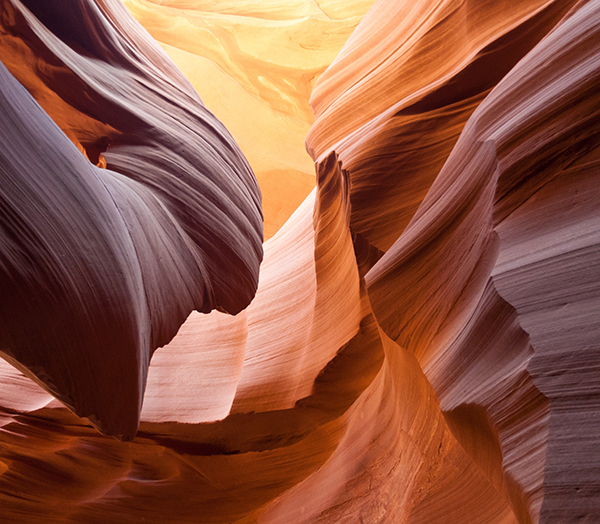
If you’ve ever run your fingers over a smooth pebble from a river bed or gazed upon awe-inspiring canyon formations, then you have witnessed the power of erosion.
Erosion is a natural process by which rocks and soils, are moulded and transported by natural forces. These forces can be in the form of water, ice, gravity, or wind, and can physically or chemically change the material they act upon.
Liquid water is the most common eroding agent on earth, and can wash away soil particles gradually over time, or in what seems like an instant.
Factors that affect soil erosion are the characteristics of the soil, the amount and intensity of rainfall, the landscape characteristics (including slope), and the vegetation.
Erosion Prevention with Vegetation
Vegetation is known for reducing the impact of soil erosion. Plant roots grab onto soil particles and rocks, providing protection against wind and water movement. Trees and large plants can also provide a physical barrier from wind, known in agriculture as “windbreaks” (one of the saving grace’s in the Dust Bowl of the 1930’s).
The Two Faces of Erosion
Don’t get me wrong, erosion isn’t all bad. It is a natural process that occurs over time, and is responsible for the deposition of nutrient-rich soils that provide the basis of agricultural development. Eroded soils are transported to new regions, where they settle and form rich, fertile regions for crop production.
However, Anthropogenic (human) activity can expedite this natural process, to the point where it damages our land. Eroded soil is carried in the air via the wind, or by water through waterways.

The soil particles suspended in the air play a major part in air pollution, contributing to respiratory disease of humans and animals. The soil particles that become sediment, pile up in places they do not belong, such as streams and rivers. Not only can this sediment interfere with water flow, it can also increase the turbidity of the water, making it hard for light to pass through. This light interference prevents growth of aquatic plants that rely on photosynthesis, as well as causing unwanted growth of other aquatic life, such as algae (a process known as eutrophication).
Agriculture and global warming are the major culprits in the rapid erosion of soil, and both are within our means to mitigate.
Erosion through Global Warming

Global warming is an area of concern among all of the natural sciences, and can drastically increase the speed of erosion through wind and water. With an increase in temperature, comes an increase in the frequency and severity of storms. Hurricanes and typhoons rapidly erode shorelines and coastal plains, including the natural and manmade structures within those areas.
In addition, the increase in water temperature results in the melting of glaciers, which in-turn elevates sea levels, also contributing to shore erosion.
As if erosion through global warming wasn’t bad enough, we are also seeing a feedback cycle in which erosion itself is contributing to global warming. Carbon sequestration in soil is a whole topic, but in short, through deposition and decaying organic matter, carbon and other gasses can be stored in soil. When soil is eroded, these trace gases are released into the atmosphere. Once in the atmosphere, these gases can trap heat, and thus contribute to the greenhouse effect and climate change.
Erosion through Agriculture
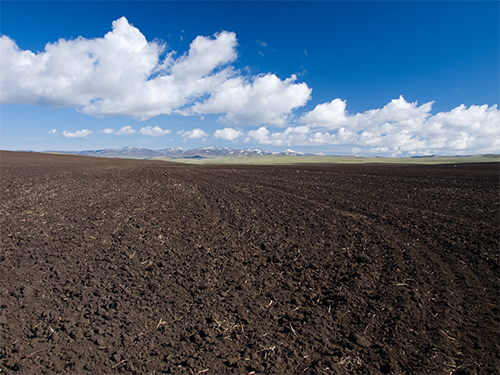
Vegetation is a critical factor in preventing erosion, so naturally, altering this factor can have dramatic effects. When trees are cut down and grasses are plowed, for the development of agricultural land, soil loses its natural protection from the elements. When crops are planted and harvested in rapid succession, roots aren’t able to fully take hold in the soil. Soil loses its natural connection to the earth surface and becomes vulnerable. In response to vegetation loss, landslides and flooding become more common, further increasing soil erosion.
Soil erosion is expensive, costing the United States an estimated $44 billion per year. With humans obtaining 99.7% of their food from agriculture, we can clearly see the need for eco-friendly control practices.
Preventing Erosion
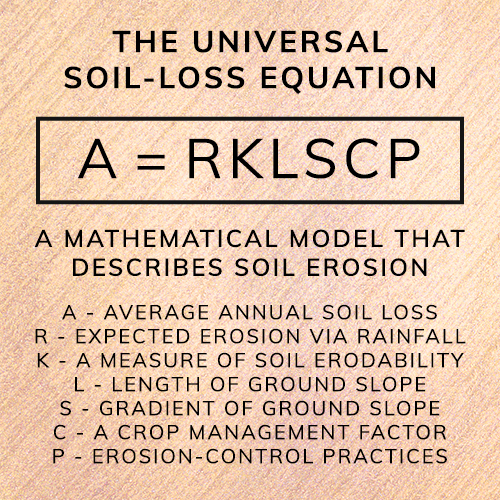
Agricultural erosion control practices have proven to be effective and can be seen contributing to the universal soil loss equation.
The first and best course of action for preventing soil erosion is to reduce erosion at the source, by implementing crop management practices in the field. This is the best option for the prevention of soil erosion, as it protects the soil, as well as the water systems that the soil is being transported to.
If the soil is not able to be saved in the field, the next measure focuses on protecting the water source by implementing control measures surrounding the field. This can include creating a barrier at the edge of the field, or in the land surrounding it.
If this is not successful, the third and final measure (also focusing on protecting the water system) is to retain eroded soil in a catchment area before it enters the water system. The catchment area holds the soil for a period of time, allowing pesticides and other contaminants to dissipate from the soil before entering the water system.
In-Field Erosion-Control Practices
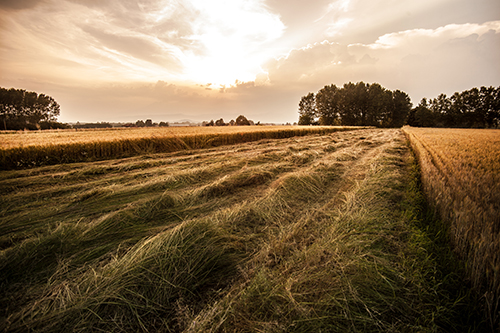
Preventing soil loss in-field is the most effective way of preventing soil erosion at its source. Common practices today focus not only on preventing soil loss, but also on creating a healthier, more fertile soil and ecosystem. These practices are collectively known as conservation agriculture.
Conservation Tillage
Tilling is the process by which soil is prepared for plants or seeds, by plowing or turning. The purpose of this movement is to aerate the soil, allowing for better penetration of roots, and also a better mixing of organic matter and soil amendments. The down-side of traditional tilling is that it can also contribute to water loss, thus increasing the soils vulnerability to wind and water erosion.
Conservation tillage is any tillage of the land, done with the intention of reducing soil disturbance. Conservation tillage is beneficial for many reasons, as it not only protects the soil structure, but also conserves moisture, reduces production costs, reduces environmental impact for wildlife, and increases the nutrient content of the soil.
Zero-till (aka. No-Till) is the most extreme form of conservation tillage, where no mechanical tillage is used on the soil and seeding is done directly into an unprepared soil. Zero-till is a method gaining popularity among farmers, for its low cost of labor, increased productivity, and smaller ecological footprint.
One of the largest limitations of zero-tillage, is that large machines are required for planting. This limits the zero-till conservation practice to large-scale farms with access to large machinery, or small farms, where tillage can be done by hand. A specific set of techniques are also required for application, in order for this process to be successful. These techniques can include cover crops, integrated pest and disease management, and crop rotations.
Cover Crops
Cover crops are crops, such as grasses and legumes, that are planted for the sole purpose of covering cropland. This practice is usually done after a harvest, when the soil is otherwise left bare and vulnerable to wind erosion. Other uses for cover crops include: catch crops, which are crops planted after the main crop has been harvested, for the prevention of nutrient leaching; smother crops, crops planted for the sole purpose of smothering weeds; green manure, a crop that is integrated into the soil while still green, for the processing and storing of nutrients; and forage crops, those planted for short periods of livestock grazing.
Regardless of the type of crop or its use, the main benefits of cover crops are fairly consistent. Cover crops protect the soil from erosion, and increase soil productivity.
Agroforestry

Agroforestry is another in-field erosion control practice, which focuses on managing the land through physical protection and biological interactions. This practice uses trees and shrubs in combination with crops and livestock, for benefits that are both economic and environmental.
In ‘The Hidden Life of Trees’, Peter Wohlleben states that:
“Together, many trees create an ecosystem that moderates extremes of heat and cold, stores a great deal of water, and generates a great deal of humidity. And in this protected environment, trees can live to be very old.”
Why then, would we not harness this natural protection that trees can provide, for the crops sustaining our livelihoods.
Some would argue that trees and shrubs take up valuable crop space. Giving the crops a safe place to grow and the support of a thriving ecosystem however, will always win in productivity.
Vegetation – the pros and cons
We have now seen that vegetation can be used to prevent erosion and enhance soil health. Vegetation can create physical barriers to wind and water, can provide nutrition through organic matter, and can connect the soil to the land, through root networks.
We have also seen that unsustainable agricultural practices can greatly contribute to soil erosion.
If crops are harvested too quickly, then soil is left bare and vulnerable to the elements.
These pros and cons do not exclude cannabis farming, and if sustainable farming practices are not employed, then it IS possible that cannabis farming can hurt the environment.
How Cannabis Can Hurt the Environment
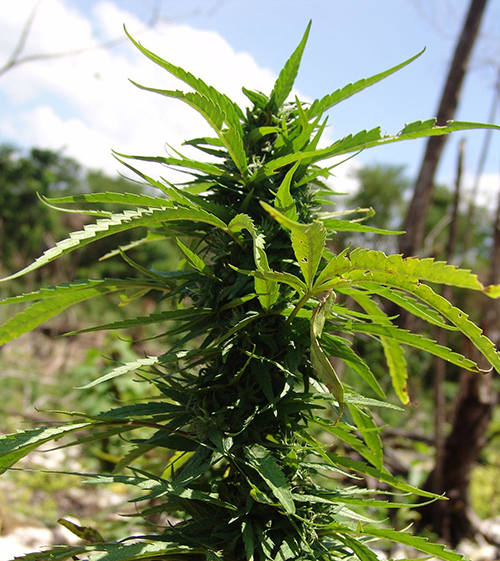
Over the past few years, a series of articles have surfaced online, claiming that marijuana farming hurts the environment. The articles draw on studies showing forest fragmentation, soil erosion, landslides, poisoning of forest animals, and depletion of natural water systems, all due to cannabis crop production.
In Soil Remediation with Cannabis, we discussed the concept of ‘Green Livers’, and looked at the numerous soil detoxification properties of cannabis. This entire post was dedicated to how amazing the cannabis plant is for our environment.
So how can there be such opposing views, both based upon scientific research?
By searching farther into the articles, we find that the cannabis crops themselves are not the culprit. It is hard to point the blame at a particular group for this damage, but all of these articles have commonalities.
The Semi-Legal Status of Cannabis
Cannabis is a huge industry, and as such, requires land-use regulations for its growth. With the semi-legal status of cannabis in the US and Canada, and differing opinions among the public, cannabis farming is often unregulated and hidden in forested areas. These areas, though private and a lush, are often the most ecologically sensitive.
Cannabis crops require a large amount of water to grow, so to supply remote forested areas, streams are often diverted, which results in water depletion elsewhere. Without regulation, poisons and pesticides are used to protect the crops from the natural abundance of wildlife in forested areas. Habitats for wildlife are destroyed, and with the removal of much of the natural vegetation, soil erosion increases. In addition to soil erosion due to vegetation, the planting of cannabis in higher elevations and often on slopes, also leads to landslides. For the environment, this is not a pretty picture.
All of these articles conclude with the same sentiment, that cannabis farming laws and regulations must advance more quickly. Regulation must keep up with the demand that is only going to increase, and also work to prevent the destruction that will inevitably follow, if no measures are taken.
“The problem is largely due to the lack of adequate regulations on weed growing…government officials could stem the problem if they applied rules to weed that are now routine for other types of agriculture.”
-Jake Brenner, Ithaca
Keeping Cannabis ‘Green’
Just last week it was announced that, on October 17th, 2018, cannabis will be legalized in Canada.
There has been a lot of fear that, with impending legalization, the booming industry will focus on profit, and not the cost to the environment.
This fear is rooted in history, where we have seen devastating environmental costs associated with rapid production, if the environment is not considered.
There are many who believe however, that with legalization, the shift toward investment in sustainable growing practices will come naturally.
“It’s one of those occasions where, when you exit the black market and enter the regulated market, you can actually use capital to make reliable systems that are better for costs and systems, and better for the environment. You can also use all the skills of engineers and [operate on a] large scale because you’re no longer having to hide your production.”
-Bruce Linton
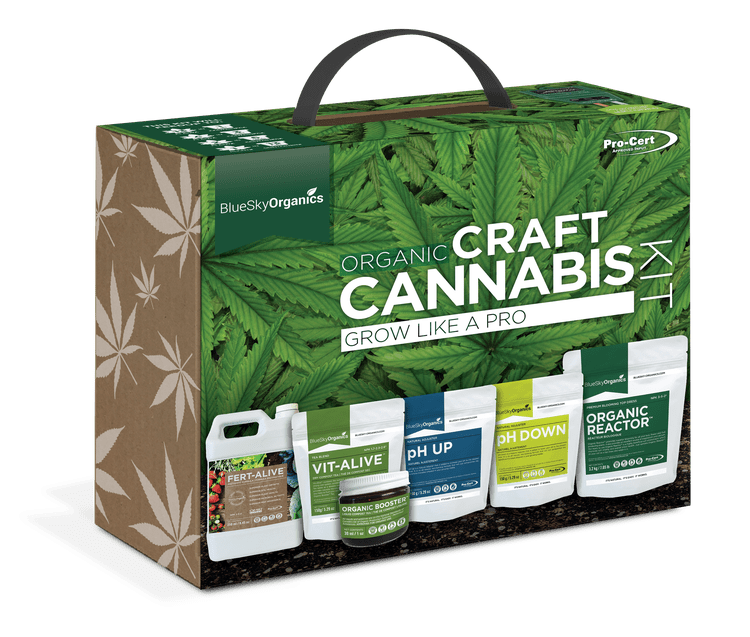
Regardless of the stance on the subject, there is a uniform agreement that there is still much research to be done, and that strict government regulations will need to be put into place.
The BlueSky Promise
At BlueSky Organics, we have a commitment to organic growing in Canada. We have developed an award-winning system that is scientifically proven to grow potent, eco-friendly cannabis. Our soil amendments meet regulation, before regulation is even set into place, allowing you to be confident in your product and stay ahead of your competition.
We are the authority on growing organic cannabis, and we are committed to keeping your cannabis green.
References
-
- Mancini, M., Horton, J. (March 12th, 2008). How Landslides Work. Retrieved from https://science.howstuffworks.com/environmental/earth/geology/landslide.htm
- National Geographic Contributors. Erosion. Retrieved from https://www.nationalgeographic.org/encyclopedia/erosion/
- Queensland Government Contributors (Oct 15th, 2015). Preventing and Managing Erosion. Retrieved from https://www.qld.gov.au/environment/land/soil/erosion/management
- Watts, Andrea (March 14th, 2018). Windbreak Benefits on the Farm. Eco Farming Daily, in Crops, Eco-farming, Permaculture, Ranching, Soil Fertility, Soil Life, Soils. Retrieved from http://ecofarmingdaily.com/windbreak-benefits-farm/
- The National Soil Erosion Research Laboratory Contributors. Soil Erosion and WEPP Technology. Retrieved from http://milford.nserl.purdue.edu/weppdocs/overview/intro.html
- WBDMD Contributors. Erosion. The West Bengal Disaster Management Department. Retrieved from http://www.wbdmd.gov.in/Pages/Erosion.aspx
- National Science Teachers Association (2001). Where is Our Soil Going? In Dig In, Hands on Soil Investigations. NSTA Press. Retrieved from https://www.nrcs.usda.gov/Internet/FSE_DOCUMENTS/nrcs144p2_037324.pdf
- Pablo A. Garcia-Chevesich, Sergio Alvarado, Daniel G. Neary, Rodrigo Valdes, Juan Valdes, Juan José Aguirre, Marcelo Mena, Roberto Pizarro, Paola Jofré, Mauricio Vera, Claudio Olivares (April 2014). Respiratory disease and particulate air pollution in Santiago Chile: Contribution of erosion particles from fine sediments,Environmental Pollution,Volume 187, Pages 202-205. Retrieved from http://www.sciencedirect.com/science/article/pii/S0269749114000049
- Gibson, Eloise (April 2018). Billion-dollar soils washing into rivers, in Newsroom NZ. Retrieved from https://www.newsroom.co.nz/2018/04/19/105618/billion-dollar-soils-washing-into-rivers#
- Ready, Sid (2018). Impacts of Erosion on Soil, Air, and Water Quality. Plant and Soil Sciences, eLibrary. Retrieved from https://passel.unl.edu/communities/index.php?idinformationmodule=1086025423&topicorder=4&maxto=20&minto=1&idcollectionmodule=1130274135
- Chestney, Nina (Feb 2012). Soil Erosion Increasing Global Warming Threat: UNEP. Thompson Reuters, Environment. Retrieved from https://www.reuters.com/article/us-unep-soil/soil-erosion-increasing-global-warming-threat-unep-idUSTRE81C13J20120213
- Lal, R. (2001). Soil degradation by erosion. Land Degrad. Dev., 12: 519-539. Retrieved from https://onlinelibrary.wiley.com/action/showCitFormats?doi=10.1002%2Fldr.472
- Amir Samimi, Soroush Zarinabadi (2012). Reduction of Greenhouse gases emission and effect on environment. Journal of American Science 8(8):1011-1015. Retrieved from http://www.jofamericanscience.org/journals/am-sci/am0808/150_5739am0808_1011_1015.pdf
- Karl, Thomas & Trenberth, Kevin (2003). Modern Global Climate Change. Science. Vol 302, Issue 5651, pp. 1719-1723. Retrieved from http://science.sciencemag.org/content/302/5651/1719
- Elles, Tiago Santos, Guimarães, Maria de Fátima, & Dechen, Sonia Carmela Falci. (2011). The costs of soil erosion. Revista Brasileira de Ciência do Solo, 35(2), 287-298. Retrieved from http://www.scielo.br/scielo.php?script=sci_arttext&pid=S0100-06832011000200001
- Gia, T.P., Degener, J., and Kappas,M. (2017). Integrated Universal Soil-Loss Equation (USLE) and Geographical Information System (GIS) for Soil Erosion Measurement in basin of Asap river, Central Vietnam. EGU General Assembly. Retrieved from http://adsabs.harvard.edu/abs/2017EGUGA..19.7516P
- TOPPS Contributors. Runoff and Erosion. TOPPS Water Protection. Retrieved from http://www.topps-life.org/runoff–erosion.html
- Statistics Canada Contributors (2015). Conventional Tillage: How Conventional Is It? EnviroStats. Retrieved from https://www150.statcan.gc.ca/n1/pub/16-002-x/16-002-x2008003-eng.pdf
- Garg, A., Kimball, B., Uprety, D.C., Hongmin, D., Upadhyay, J., & Dhar, S. (2006). Conservation Tillage. ClimateTech Wiki. Retrieved from http://www.climatetechwiki.org/technology/conservation-tillage
- M. Holland (2004). The environmental consequences of adopting conservation tillage in Europe: reviewing the evidence. Agriculture, Ecosystems & Environment. Volume 103, Issue 1, 1-25. Retrieved from https://www.sciencedirect.com/science/article/pii/S0167880904000593
- Carter, M.R., and Rennie, D.R. (1982). Changes in Soil Quality Under Zero Tillage Farming Systems: Distribution of Microbial Biomass and Mineralizable C and N Potentials. Canadian Journal of Soil Science. Volume 62(4): 587-597. Retrieved from http://www.nrcresearchpress.com/doi/abs/10.4141/cjss82-066#citart1
- Busari, M.A., Kukal, S.S., Kaur, A., Bhatt,R., Dulazi, A.A. (2015). Conservation tillage impacts on soil, crop and the environment. International Soil and Water Conservation Research. Volume 3, Issue 2, 119-129, Retrieved from https://www.sciencedirect.com/science/article/pii/S2095633915300630
- Agriculture Canada Contributors (2014). Flexibility of no till and reduced till systems ensures success in the long run. Agriculture and Agri-Foods Canada- Government of Canada. Retrieved from http://www.agr.gc.ca/eng/science-and-innovation/agricultural-practices/soil-and-land/soil-management/flexibility-of-no-till-and-reduced-till-systems-ensures-success-in-the-long-term/?id=1219778199286
- Minnesota Department of Agriculture Contributors (2018). Conservation Practices- Cover Crops, Financial and Technical Assistance. Retrieved from http://www.mda.state.mn.us/protecting/conservation/practices/covercrops.aspx
- Snapp, S. S., Swinton, S. M., Labarta, R. D., Mutch, J. R., Black, R., Leep, J. Nyiraneza, and O’Neil, K. (2005). Evaluating Cover Crops for Benefits, Costs and Performance within Cropping System Niches. Agron. J. 97:322-332. https://dl.sciencesocieties.org/publications/aj/abstracts/97/1/0322
- (2018). What is Agroforestry? Association for Temperate Agroforestry. Retrieved from http://www.aftaweb.org/about/what-is-agroforestry.html
- Ithaca College Contributors (2017). Marijuana farming hurts environment, new study finds. ScienceDaily. Retrieved from sciencedaily.com/releases/2017/10/171031202705.htm
- Shoemaker, S. (2016). Pot’s Hidden Price: Study Shows Environmental Impact of Marijuana Farming. Ithaca College News. Retrieved from https://www.ithaca.edu/ic-news/releases/pots-hidden-price:-study-shows-environmental-impact-of-marijuana-farming-42424/
- Moxley, M. (2014). Green But Not Green: How Pot Farms Trash the Environment. University of California. Retrieved from http://www.slate.com/articles/news_and_politics/uc_breakthroughs_2014/2014/04/green_but_not_green_how_pot_farms_trash_the_environment.html
- Dyer, J (2017). Canada’s Weed Industry Could Be Harming the Environment More Than Logging. Seeker, Conservation. Retrieved from https://www.seeker.com/earth/conservation/booming-cali-weed-industry-could-be-harming-the-environment-more-than-logging
- Wang, I.J., Brenner, J.C., Butsic, V. (2017). Cannabis, an emerging agricultural crop, leads to deforestation and fragmentation. Ecological Environ 15(9):495-501. Retrieved from https://esajournals.onlinelibrary.wiley.com/action/showCitFormats?doi=10.1002%2Ffee.1634
- Government of Canada (June 2018). Cannabis Legalization and Regulation. Department of Justice. Retrieved from http://www.justice.gc.ca/eng/cj-jp/cannabis/
- CBC Radio Contributors, Smith,W. & Nelson, K. (2018). Growing weed is not so great for the environment – what Canada can do to make it greener. Retrieved from http://www.cbc.ca/radio/thecurrent/the-current-for-january-12-2018-1.4483139/growing-weed-is-not-so-great-for-the-environment-what-canada-can-do-to-make-it-greener-1.4483456
*all retrieved on June 26th, 2018

